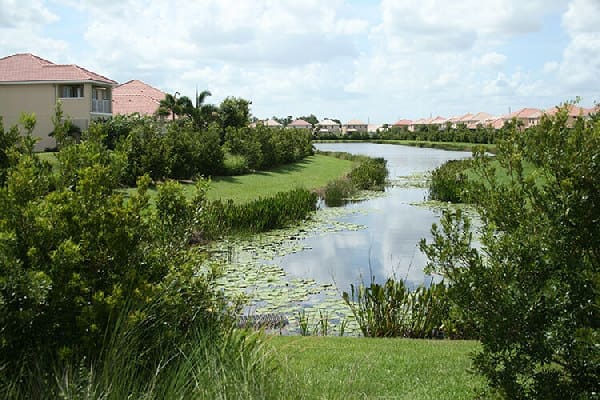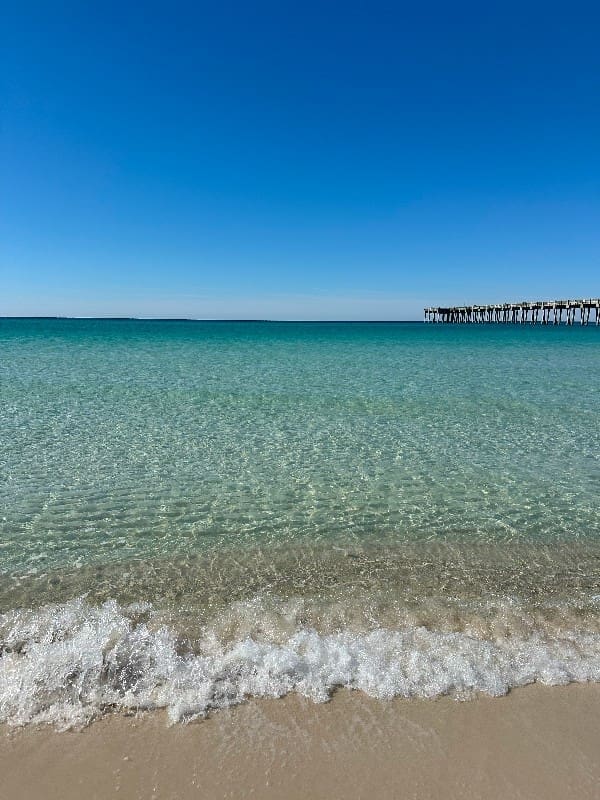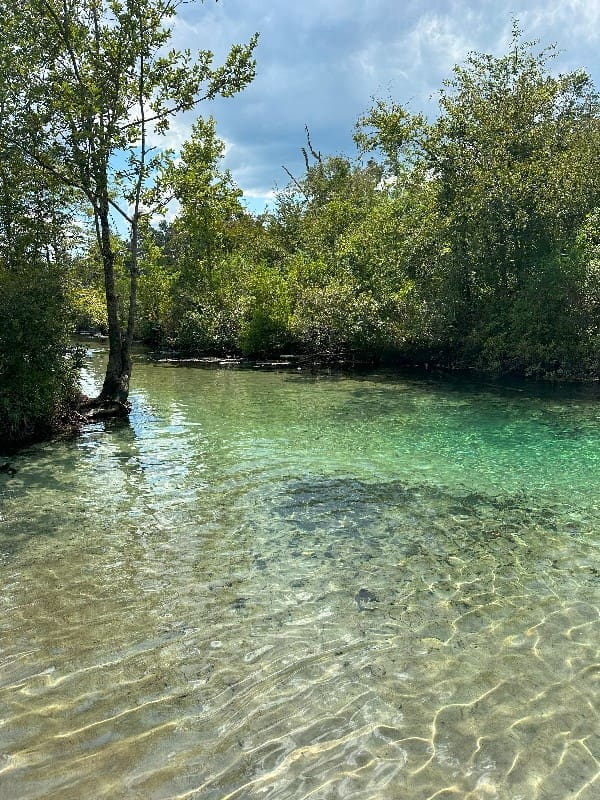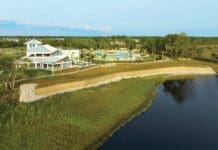Protecting an Important Resource
by Lauren Goldsby
We know that plants rely on water to grow, but we don’t always consider how growing plants impacts the water around us. More than 25% of Bay County is covered by water, and many of us were attracted to the area for that very reason. Whether you live here, work here, or vacation here you have benefitted from our natural waters.
Regulations That Protect Our Water
Both federal and state regulations help protect and maintain water quality. The Clean Water Act allows the EPA to set water quality standards and enforce pollution limits. Additionally, the Florida Department of Environmental Protection (FDEP) and the Florida Department of Agriculture and Consumer Services (FDACS) assess and restore impaired waters and determine best management practices for growers. These regulations help protect public health, ecosystems, and the tourism and recreation industries that rely on Florida’s clean water, beautiful beaches, and natural springs.

Florida Friendly Landscaping™ Principles
Florida Friendly LandscapingTM principles were developed to promote sustainable landscape practices that protect Florida’s natural resources.
- Right Plant, Right Place.
- Water Efficiently
- Fertilize Appropriately
- Mulch
- Attract Wildlife
- Manage Yard Pests Responsibly
- Recycle Yard Waste
- Reduce Stormwater Runoff
- Protect the Waterfront
Incorporating these practices into your landscape will help you reduce water usage and maintenance while protecting natural spaces and species around you.

A study was done comparing water use in a traditional Florida landscaped (TFL) yard versus water use in a Florida Friendly LandscapedTM (FFL) yard. The yard landscaped in using FFL principles used 83% less water than the traditional Florida landscaped yard (Clem, et al., 2021).
Why Reducing Water and Nutrient Runoff Matters
Using less water can reduce nutrient runoff, which can leach into our freshwater systems. Nitrogen and phosphorus are especially problematic because they fuel algae growth. Certain species of algae release toxins that kill fish and contribute to red tide events.
To further reduce runoff:
- Only fertilize when plants are actively growing to prevent excess nutrients from washing away.
- Leave a 10-foot buffer of unmowed vegetation along water edges. This buffer helps filter nutrients and pollutants before they reach the water.
If you’re interested in incorporating Florida-Friendly Landscaping™ principles into your home landscape, reach out to the UF/IFAS Extension Office in Bay County for guidance!

Research Cited: Clem, T. B., Hansen, G. M., Dukes, M. D., Momol, E., Kruse, J., Harchick, C., & Bossart, J. (2021). Sustainable residential landscapes in Florida: Controlled comparison of traditional versus Florida-friendly landscaping. Journal of Irrigation and Drainage Engineering, 147(7), 04021025.
Lauren Goldsby can be reached at legoldsby@ufl.edu. An Equal Opportunity Institution. UF/IFAS Extension, University of Florida, Institute of Food and Agricultural Sciences, Andra Johnson, Dean. Single copies of UF/IFAS Extension publications (excluding 4-H and youth publications) are available free to Florida residents from county UF/IFAS Extension offices.





















































